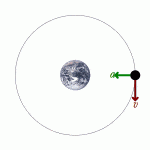Types Of Wood Hardness
The many types of wood hardness are tested with a hardness test called Janka. Basically, there are so many different types of wood hardness. There are hardwoods and there are softwoods. There are heaps of trees that can be under these two. There are many uses for wood too and this is why it is very important that you are able to identify the types of wood hardness as it will allow you to choose the right wood for the right use.
Janka is a test wherein the types of wood hardness are determined. Here, there will be a steel ball that will be used. The ball is .444 in big. A wood sample is then used where the ball will be embedded to it. The force that is used to embed half of the ball will be the types of wood hardness. There are many different ways to get the types of wood hardness as it depends on the grain of the wood. There is what you can side types of wood hardness. This is basically the amount of force that is needed to embed half of the ball when the grain is perpendicular to the plank. On the other hand, there are also end types of wood hardness. This is the test that is done to the cut surface of the wood sample.
Around the world, the measurement of the types of wood hardness can differ. For instance, in the US the types of wood hardness are measured in pounds force or lbf. In Australia, on the other ahdn, they use newtons and kilonewtons to measure the force used to embed the ball. There are some countries, however, that use Janka as a unit of measurement and hence they come up with the value plus Janka.
The value of force that is applied to the wood to embed half the Janka ball is listed in averages. You see, sometimes there will be a difference when it comes to the force needed to embed the ball. Sometimes, even when the wood is the same, they will require to have the exact same amount of force to embed the Janka ball. The wood samples that are used are of the same size, though. The wood sample has to be at least an inch to a couple of inches thick. There are many different factors that can affect the values that are gotten to get the hardness of the wood too. This is why it is very important that the final hardness value listed in these woods will be ones that are the average results after a number of tries.
Example hardness values of different kinds of woods are: Ebony 3220, Bloodwood 2900, Spotted Gum 2473, Mesquite 2345, Golden Teak 2330, Pradoo 2170, Brushbox 2135, Merbau 1925, Purpleheart 1860, Black Locust 1700, Highland Beech 1686, Tualang 1624, Zebrawood 1575, White Ash 1320, True Pine 1570, Hard Maple and Sugar Maple 1450, Sweet Birch 1470, and many others. The hardest wood is known to be the Australian Buloke with 5060 hardness and the weakest is Cuipo with just 22.






